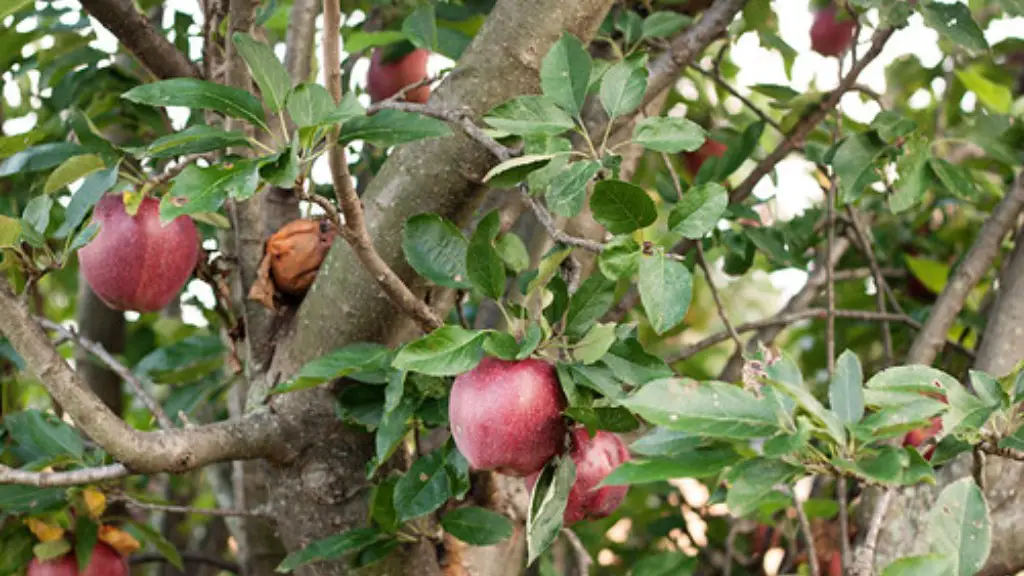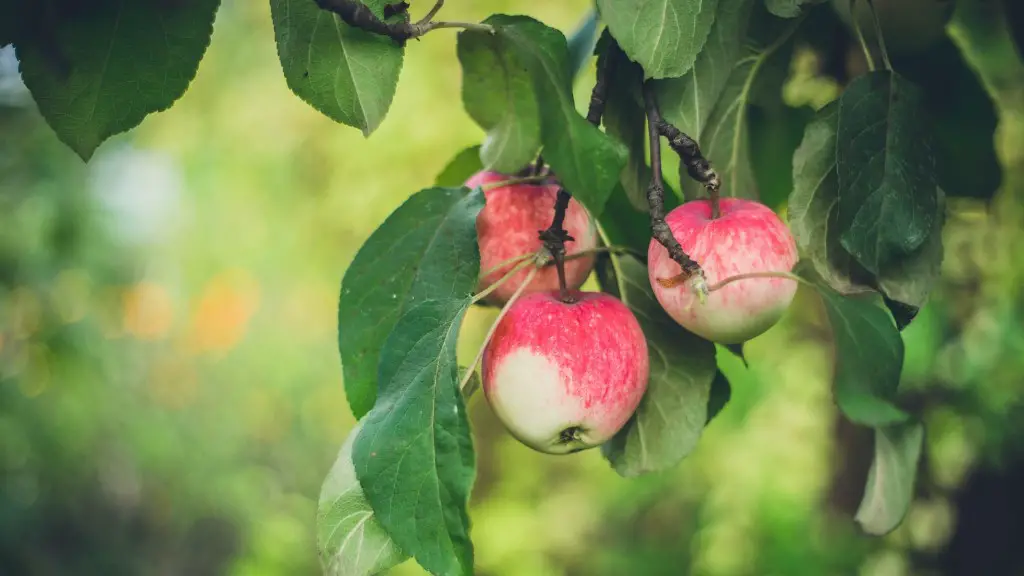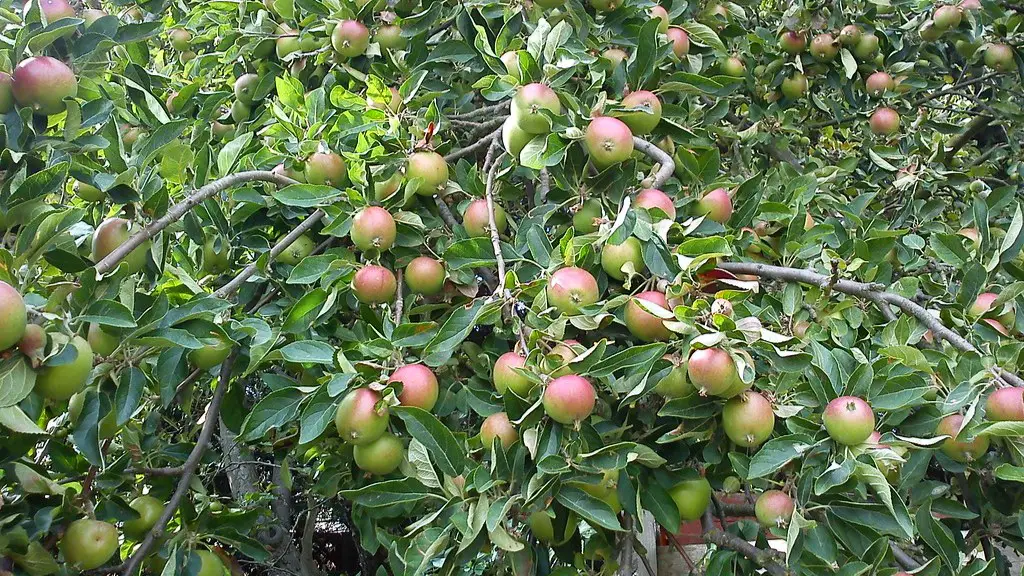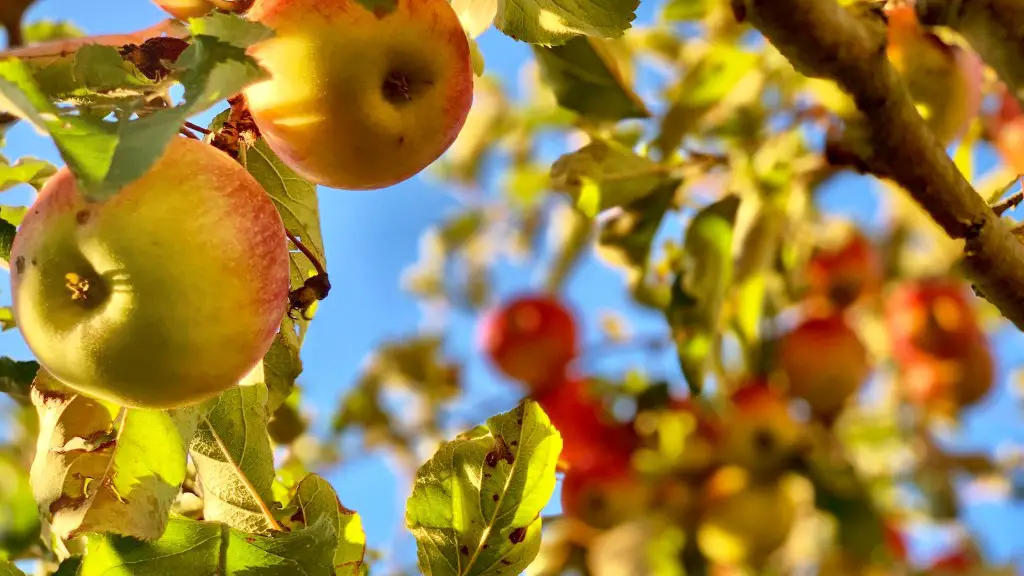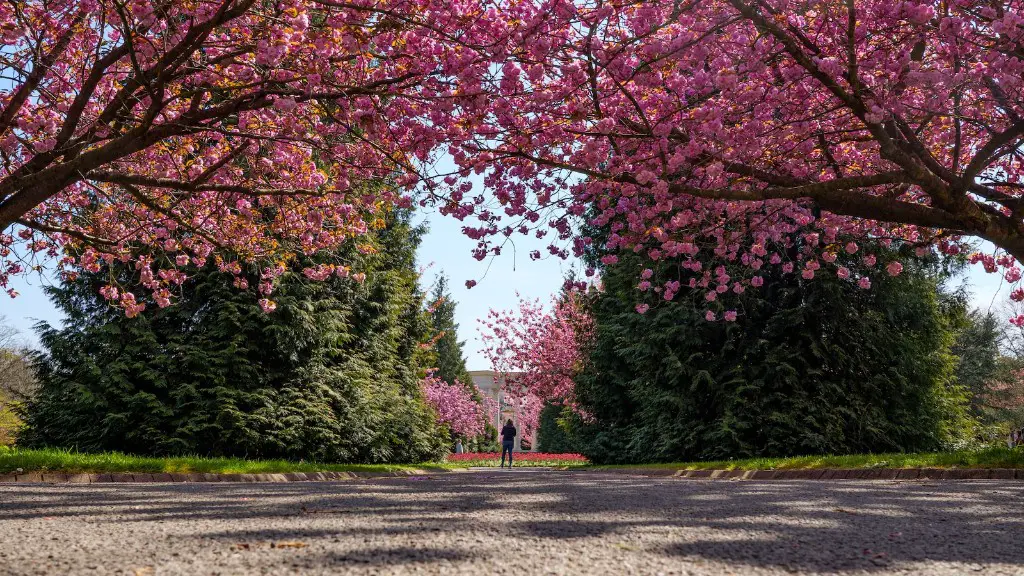There is more than meets the eye when it comes to understanding why an apple tree may be losing its leaves. It could be the result of a number of factors ranging from environmental factors such as temperature and wind to the physiological state of the tree itself. In this post we’ll explore each of these factors and what can be done to mitigate them.
Environmental Factors
Temperature is an important factor in understanding why an apple tree can lose its leaves. Extremely cold temperatures can sometimes cause leaves to drop prematurely, as can dry and windy conditions. In these cases, it’s recommended to monitor and modify the tree’s environment to ensure it remains optimal for its health.
Additionally, irregular sunlight exposure over an extended period of time can lead to leaves falling from the tree, as photosynthesis is an important process for continued leaf growth and sustenance. When available sunlight exposure is inadequate, the tree may respond by shedding its leaves.
Finally, soil content with too much or not enough nitrogen can limit the tree’s growth, resulting in stress and leaf shedding. Checking the nitrogen levels in the soil and adjusting as necessary is one preventative measure for addressing this issue.
Physiological Factors
In addition to environmental factors, the physiological state of the tree itself should also be taken into account when examining why it is losing its leaves. Stressors such as a lack of water or a wound in the tree bark can cause leaves to drop. Applying adequate amounts of water during hot and dry conditions, as well as ensuring that there are no damage to the tree, can help mitigate this.
Bacterial and fungal diseases are another potential cause of leaf loss in apple trees. It’s best to identify the disease responsible and adjust the environment if necessary. Pruning the affected area before it spreads is one possible solution.
In addition, certain insects can also cause premature leaf dropping. If the tree appears to be healthy, it is important to identify and eliminate the presence of such insects to avoid further damage.
Lastly, an excess of nitrogenous fertilizer has been known to cause leaf loss in apple trees. In these cases, it’s best to reduce the amount of fertilizer applied and carefully monitor the tree’s environment.
Nutritional Factors
Nutritional deficiencies can also be a factor in apple tree leaf loss. Deficiencies in potassium can cause leaves to brown and drop off the tree, so be sure to treat the tree accordingly with fertilizers rich in potassium.
Additionally, an insufficient amount of magnesium can lead to yellowing and dropping of leaves. In this case, the use of Epsom salts or a magnesium fertilizer can help alleviate the deficiency.
Similarly, a lack of iron can lead to stunted plant growth and leaf shedding. Iron chelate can be used to address this, as it helps increase the amount of available iron in the soil.
Lastly, boron deficiencies can cause leaves to become pale, followed by blackening and eventual shedding. In this case, applying boron-based fertilizer to the tree could help solve the issue.
Pests and Insects
Insects and pests such as aphids, caterpillars and plant lice can cause damage to the leaves of an apple tree, leading to premature leaf loss or discoloration. These should be identified and treated with suitable insecticides or pesticides.
In addition, bacterial and fungal diseases can cause irreversible damage to the leaves. In these cases, insecticides and fungicides should be applied to prevent the disease from spreading.
Furthermore, environmental factors such as too much water and insufficient sunlight can lead to the formation of diseases and can result in leaf discoloration or premature leaf shedding. In these cases, the environment needs to be adjusted accordingly to limit further damage.
Lastly, the presence of weeds around the apple tree can prevent the tree from receiving the necessary nutrients and oxygen it needs to thrive and can lead to leaf shedding. To avoid this, weeds need to be regularly removed around the tree.
Fungal Disease
Fungal diseases such as apple scab and powdery mildew can lead to the premature shedding of leaves. These diseases can be identified by the formation of patches of yellow, brown or black spots on the leaves. In these cases, the environment should be monitored for humidity levels and the tree should be treated with fungicides to prevent the disease from spreading.
Additionally, fire blight can cause irreparable damage to the leaves of an apple tree, resulting in discoloration, wilting and eventual leaf loss. Pruning and treating the tree with antibiotics is necessary to reduce the spread of the disease.
Furthermore, the presence of bark-boring insects can cause leaves to drop prematurely, as these insects can affect the tree’s vascular system by disrupting the movement of nutrients. Pruning and disposing of affected branches is one way to help mitigate this.
Finally, diseases caused by certain mites such as spider mites can cause premature leaf loss and discoloration. These mites should be identified and treated with suitable insecticides.
Air Pollution
Air pollution is another contributor to leaf shedding in apple trees. Pollutants such as sulfur dioxide, ozone and nitrogen dioxide have been known to cause leaves to discolor and drop prematurely. To avoid this, the tree should be grown in areas with low levels of air pollution.
Additionally, smoke from nearby wildfires or exhaust from motor vehicles can also cause premature leaf shedding, as it reduces the amount of available oxygen in the air. Thus, it is important to monitor and adjust the environment to ensure that there is sufficient oxygen available to the tree.
Finally, particulate matter and pollutants such as dust can reduce the amount of sunlight that reaches the leaves, leading to yellowing and eventual leaf loss. To avoid this, steps should be taken to minimize the amount of particulates in the air, such as avoiding the use of chemical fertilizers or wearing face masks when in areas with high levels of dust.
